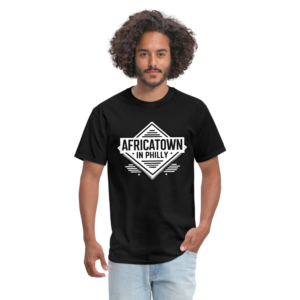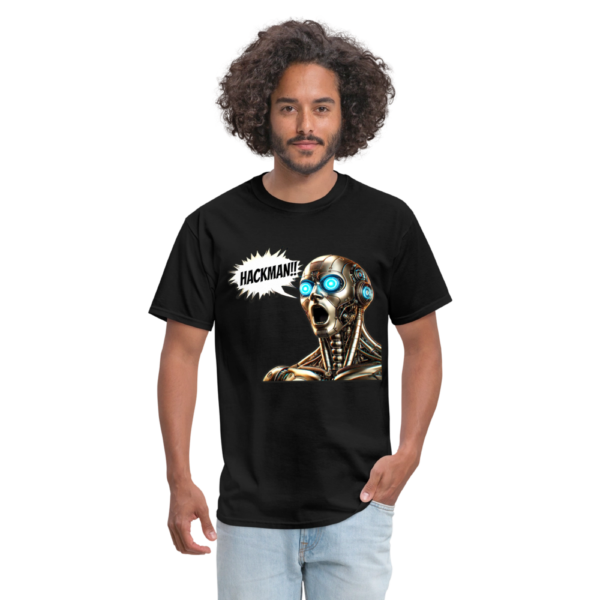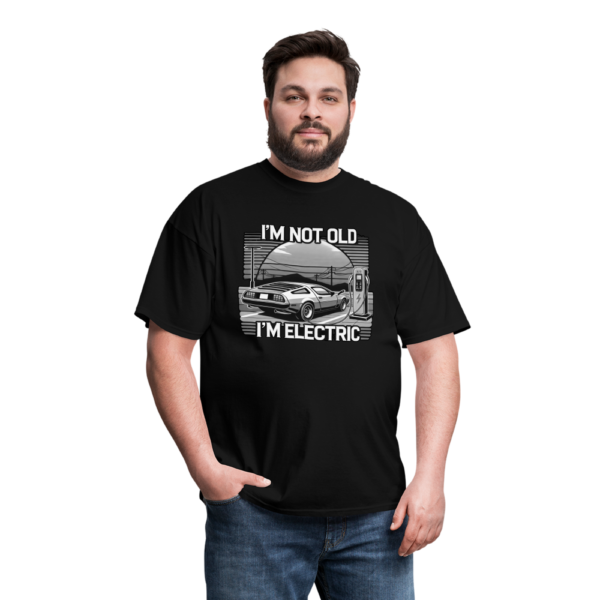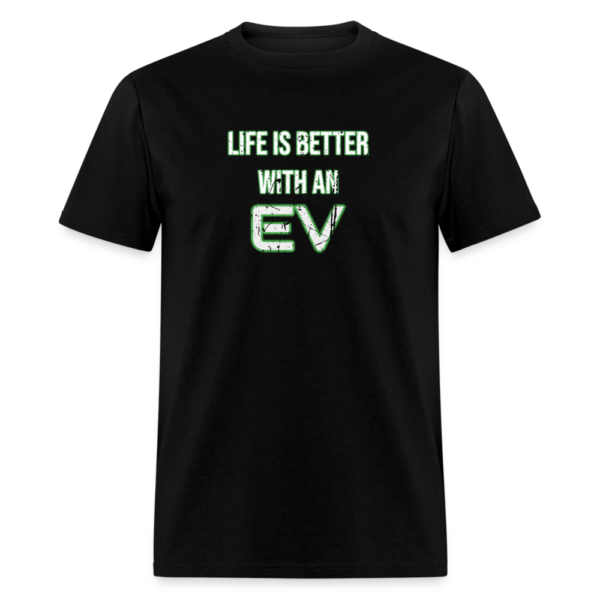Your cart is currently empty!
Tag: future of mobility
Tesla’s Bold Move: The Rise of the Autonomous Robotaxi Revolution in Austin
Tesla has just set the stage for a seismic shift in the ride-sharing world. In a surprising turn, the electric vehicle giant has decided to opt out of a potential collaboration with Uber. Instead, Tesla is focusing its efforts on independently developing and deploying its very own autonomous robotaxi service. This strategic move not only signals Tesla’s confidence in its advanced autonomous driving technology but also sets up a direct competition with ride-sharing giants like Uber and tech pioneers like Waymo in Austin.
The New Era of Mobility: A Glimpse into Tesla’s Autonomous Future
Tesla’s decision to go solo marks a bold departure from conventional partnerships in the automotive industry. By choosing to control every aspect of its robotaxi service, Tesla aims to redefine the customer experience. This comprehensive approach means that Tesla will handle everything—from the vehicle design and software development to customer support and the overall ride experience. The goal is simple: to create a seamless, high-quality, and cost-effective transportation solution that could potentially outpace traditional ride-sharing models.
Why Tesla Opted for an Independent Strategy
The reasoning behind Tesla’s decision is rooted in its belief that full control over the autonomous service will allow for faster innovation and more agile responses to market demands. By eliminating the need to compromise with partners like Uber, Tesla can implement cutting-edge features and safety measures without the red tape that often accompanies joint ventures. This approach is expected to deliver lower operating costs, enhanced safety protocols, and a more integrated customer experience—advantages that could make Tesla’s robotaxi service a formidable challenger to established ride-sharing networks.
The Competitive Landscape in Austin
Austin has emerged as a hotbed for technological innovation and autonomous vehicle testing. With companies like Uber and Waymo already making inroads in the market, Tesla’s entry into the local scene is set to intensify the competition. Austin’s supportive regulatory environment, combined with its tech-savvy population, makes it an ideal location for piloting Tesla’s autonomous robotaxi service. As Tesla ramps up its efforts, the city could soon witness a transformation in how residents commute, with a growing number of autonomous vehicles on the roads.
Advanced Technology Meets Unprecedented Autonomy
Tesla’s advanced autonomous driving system has long been a topic of interest for both enthusiasts and critics alike. The company’s continuous improvements in self-driving algorithms, sensor technology, and machine learning have positioned it at the forefront of the autonomous revolution. By integrating these innovations into its robotaxi service, Tesla aims to offer an experience that is not only safer and more efficient but also more cost-effective.
Enhanced Safety and Lower Costs
One of the key selling points of Tesla’s approach is the potential for enhanced safety. Traditional ride-sharing services often rely on human drivers, which introduces variables like fatigue, distraction, and human error. Tesla’s robotaxi service, on the other hand, leverages a sophisticated network of sensors, cameras, and radar systems that work in unison to detect and react to obstacles on the road. This technology is designed to significantly reduce the risk of accidents, thereby creating a safer commuting option for users.
Moreover, by eliminating the need for human drivers, Tesla’s robotaxi service is projected to operate at a lower cost. Reduced labor expenses can translate into lower fares for passengers, making autonomous ride-sharing an attractive alternative to conventional models. This cost-efficiency could be a major driver in shifting consumer preferences, potentially rendering traditional ride-sharing services less competitive over time.
Superior Technology and User Experience
Tesla’s strategy goes beyond just safety and cost savings. The company is committed to delivering a superior user experience by integrating advanced features that are not typically found in traditional ride-sharing services. Imagine stepping into a vehicle where every detail, from the interior design to the software interface, is meticulously crafted to ensure comfort and convenience. With its state-of-the-art infotainment system, seamless connectivity, and personalized ride options, Tesla is setting new standards in customer service.
The ability to update and improve the system over time through over-the-air software updates further enhances the service. This continuous improvement model means that Tesla’s robotaxi service could become more efficient, safer, and user-friendly with each passing day. In a world where technology evolves rapidly, Tesla’s proactive approach positions it as a leader in the next generation of mobility.
The Impact on Traditional Ride-Sharing Models and Critics’ Concerns
While Tesla’s independent move is generating significant excitement, it is not without its critics. Some industry experts argue that by going solo, Tesla risks alienating potential partners and complicating the transition to a fully autonomous future. Critics contend that traditional ride-sharing companies like Uber have built a strong foundation through years of network effects, establishing a vast user base and robust support systems that could prove challenging to disrupt.
Could Tesla’s Model Render Uber Obsolete?
Detractors point out that the comprehensive control over the customer experience might be a double-edged sword. While it allows Tesla to innovate rapidly, it also places the entire burden of success on a single entity. In contrast, companies like Uber have cultivated significant market presence through partnerships, diversified services, and a strong brand identity. However, proponents of Tesla’s strategy argue that the potential for lower costs and superior technology could eventually make traditional ride-sharing models less attractive. As Tesla continues to refine its autonomous systems, the economic advantages may outweigh the benefits of an established network.
The Role of Network Effects and Established User Bases
Supporters of Uber emphasize that the company’s established user base and network effects remain significant competitive advantages. Even if other manufacturers, including Tesla, achieve similar autonomous capabilities, the ingrained loyalty and familiarity of millions of Uber users could help sustain its market dominance. The challenge for Tesla will be to not only match but exceed the convenience and reliability that users have come to expect from established ride-sharing platforms.
The debate between innovation and established market dominance is heating up. On one hand, Tesla’s revolutionary approach promises a future where autonomous vehicles provide safer, cheaper, and more enjoyable rides. On the other hand, the proven business models of companies like Uber suggest that there is still plenty of room for traditional ride-sharing services to thrive, especially if they can adapt quickly to technological advancements.
Looking Ahead: What Does the Future Hold?
Tesla’s independent journey into the autonomous robotaxi market is a clear indication of the broader transformation occurring within the transportation industry. As the lines between technology, mobility, and customer service continue to blur, consumers can expect a future where traditional models are constantly challenged by innovative newcomers. Whether Tesla’s approach will completely upend the industry remains to be seen, but one thing is certain: the race for the future of ride-sharing is heating up, and Austin is at the heart of this transformation.
The Potential for Disruption
If Tesla’s strategy pays off, the implications could be far-reaching. A successful rollout of an autonomous robotaxi service would not only revolutionize how people travel but also force competitors to rethink their strategies. Companies that rely heavily on human drivers may find themselves at a disadvantage as the benefits of automation—such as reduced costs, improved safety, and enhanced user experiences—become increasingly apparent. In this scenario, even well-established players like Uber might be compelled to accelerate their own autonomous initiatives or form new partnerships to keep pace.
What This Means for Consumers
For everyday consumers, the emergence of Tesla’s autonomous robotaxi service promises several tangible benefits. Lower fares, increased safety, and a more personalized ride experience are just a few of the advantages on offer. Additionally, the integration of advanced technology could lead to a reduction in traffic congestion and a more efficient use of urban infrastructure, particularly in tech-forward cities like Austin. The future of mobility is not just about getting from point A to point B—it’s about creating a holistic, integrated experience that enhances the quality of urban life.
Embracing the Change: Join the Conversation!
The automotive and tech industries are evolving at a breakneck pace, and Tesla’s recent move is just the tip of the iceberg. We want to hear from you! What are your thoughts on Tesla’s decision to independently develop its autonomous robotaxi service? Do you believe this will mark the beginning of the end for traditional ride-sharing models, or do established players like Uber have the resilience to adapt and thrive?
Drop your comments below and share your insights on this unfolding revolution. Your feedback is invaluable in shaping the future conversation around mobility and technology. And if you found this post engaging and informative, don’t forget to share it with your friends and on your social media platforms. Let’s spread the word about the transformative changes coming to our streets and the exciting future of autonomous travel!
Conclusion: The Road Ahead is Autonomous
Tesla’s bold decision to forgo a collaboration with Uber in favor of independently launching its autonomous robotaxi service signals a significant shift in the transportation landscape. With a focus on complete customer experience control, advanced technology, and cost efficiency, Tesla is positioning itself as a serious contender in the autonomous ride-sharing arena. The competition with Uber and Waymo in Austin is expected to drive rapid innovation, pushing all players in the industry to elevate their game.
As we witness this dynamic evolution, one thing remains clear: the future of mobility is autonomous, and the choices made by industry giants today will shape the way we travel tomorrow. Stay tuned for more updates and join the conversation by commenting and sharing your thoughts on this revolutionary development.
Robot Driver Yelling Hackman Unisex Classic T-Shirt
$19.99Robot Driver Yelling Hackman Unisex Classic T-Shirt. Rep your city and humor with the Robot Driver Yelling Hackman Unisex Classic T-Shirt!
Featuring a playful twist on the nickname “Hackman” (unofficial taxis in the hood), this tee combines futuristic tech with street-smart culture. A perfect blend for those who love humor, city life, and the hustle of everyday adventures!
-

Hungry and Humble Football Player Flapping Arms Touchdown Celebration Unisex Classic T-Shirt #philly
$19.99 Select options This product has multiple variants. The options may be chosen on the product page -

Africatown in Philly Phrase Unisex Classic T-Shirt
$13.99 Select options This product has multiple variants. The options may be chosen on the product page -

Vintage Funny Cat Selfie UFO Alien Invasion Unisex Classic T-Shirt
$13.99 Select options This product has multiple variants. The options may be chosen on the product page -

Vintage Philly Underdogs German Shepherds Unisex Classic T-Shirt
$9.99 Select options This product has multiple variants. The options may be chosen on the product page -

Voxel Art Anime Cat Eating Ramen Noodles Unisex Classic T-Shirt
$19.99 Select options This product has multiple variants. The options may be chosen on the product page
————————————————
We use AI GPT Chatbots to help with our content and may get some things wrong.
————————————————-
-
Tesla’s Hardware 4 Revolution
: Lower Prices for Used Teslas and a Smarter Future for Autonomous Driving
Tesla is once again making waves in the automotive world with a groundbreaking announcement that full autonomous driving, which is different from FSD or Full Self-Driving when you have to occasionally confirm by touching the steering wheel, will be exclusive to their newer models equipped with Hardware 4 (HW4). If you’re a potential buyer eyeing that dream of owning a Tesla or someone who has been waiting for a bargain on a used model, this news might just be the game-changer you’ve been waiting for.
In this post, we’re diving deep into what this development means for the market, the evolution of Tesla’s self-driving technology, and why this is a win-win for new and used Tesla buyers alike. Stick with us as we explore everything from technical insights to the impact on prices, and don’t forget to comment and share your thoughts!
The Evolution of Tesla’s Autonomous Driving Hardware
Tesla’s journey toward full autonomy has been a long and fascinating ride. Initially, Tesla equipped all its vehicles with the necessary hardware to achieve full self-driving capabilities. However, as technology advanced, so did the requirements for truly safe and effective autonomous driving. Enter Hardware 4—a suite of improved sensors, enhanced cameras, and upgraded onboard computing power designed to handle the complexities of real-world driving more efficiently than its predecessor, Hardware 3 (HW3).
HW4 represents a significant leap in automotive technology. With its enhanced processing power, Tesla vehicles equipped with this new hardware are expected to perform better in diverse conditions, making split-second decisions more reliably. This improvement is not just a technological upgrade; it’s a shift in how autonomous driving is perceived and implemented in modern vehicles.
Why Hardware 4 is a Big Deal
- Enhanced Safety and Reliability: With improved sensors and cameras, HW4 is designed to better detect obstacles, pedestrians, and other vehicles, ensuring that the car can react appropriately in real-time. This means that the transition to full autonomous driving could be smoother and safer for everyone on the road.
- Increased Processing Power: The computational horsepower of HW4 enables the system to process complex algorithms faster. This is crucial when making decisions on the fly, such as during sudden braking or evasive maneuvers.
- Future-Proofing Technology: Tesla’s decision to make full autonomous-driving exclusive to HW4 models ensures that future software updates and improvements can be fully supported without the limitations of older hardware. This forward-thinking approach positions Tesla as a leader in the autonomous vehicle space.
- Improved User Experience: For drivers, this means a more intuitive and responsive system that can handle a wider variety of driving scenarios with minimal intervention.
The Impact on the Used Tesla Market
Now, let’s talk about what this means for those of you keeping an eye on used Tesla prices. As the market adapts to the reality that only HW4-equipped vehicles will receive the full autonomous driving upgrade, older models with HW3 are likely to see a drop in their resale value. This depreciation, while initially a downside for existing HW3 owners, is a boon for potential used Tesla buyers.
A Silver Lining for Bargain Hunters
For buyers interested in owning a Tesla without breaking the bank, the exclusivity of Full autonomous-Driving to HW4 models creates a new opportunity. With newer models commanding premium prices due to their advanced hardware, the secondary market for HW3 models becomes more accessible. Here’s why this is good news:
- Lower Entry Costs: As demand shifts toward HW4-equipped vehicles, older models become more competitively priced. This means you can step into the world of electric vehicles with a Tesla at a fraction of the cost.
- Affordability Without Sacrificing Quality: Even though HW3 models won’t receive the full suite of autonomous features, they still offer the robust performance, efficiency, and style that Tesla is known for. For many, this is a small trade-off considering the significant cost savings.
- A Transitional Market: The current market offers a unique transitional phase. As technology evolves and HW4 becomes the new standard, buyers who invest in HW3 vehicles now can still enjoy Tesla’s core functionalities, while waiting for further enhancements or possibly even hardware upgrades in the future.
Considerations for Used Tesla Buyers
When shopping for a used Tesla, there are a few factors to keep in mind:
- Current Features vs. Future Upgrades: Understand that while HW3 models may not unlock the full autonomous-driving capabilities immediately, they still come with a host of advanced features that make everyday driving enjoyable and safe.
- Price Negotiation: With the market adjusting to this new reality, there might be room for negotiation on price. Sellers may be more willing to lower their asking prices in order to move inventory, making it an ideal time for savvy buyers to strike a deal.
- Resale Value Considerations: If you’re planning to keep your Tesla for a while, the depreciation might not be a significant concern. However, if resale value is important to you, consider how quickly the technology is advancing and what that might mean for future trade-in values.
A Closer Look at Tesla’s Full Autonomous-Driving Future
The news that full autonomous driving will only be available for HW4 models underscores Tesla’s commitment to innovation and safety. While it might seem like a setback for owners of older models, the long-term benefits could be substantial.
The Road to Full Autonomy
Autonomous driving technology is not just about convenience; it’s about creating a safer, more efficient transportation system. Tesla’s focus on HW4 ensures that as the software evolves, it will have the hardware capability to handle increasingly complex driving environments. This includes:
- Urban Navigation: Handling busy city streets with unpredictable elements such as pedestrians, cyclists, and erratic drivers.
- Highway Autopilot: Managing high-speed driving conditions where quick decision-making is paramount.
- Dynamic Weather Conditions: Operating reliably in rain, snow, and fog, where sensor accuracy and processing power are critical.
How It Benefits the Community
By ensuring that only vehicles with the best possible hardware can access full autonomous features, Tesla is setting a high standard for safety. This commitment benefits not only Tesla owners but the broader community by potentially reducing accidents and improving traffic flow. For tech enthusiasts and early adopters, this is a clear signal that the company is not resting on its laurels but is continuously pushing the boundaries of what is possible in automotive technology.
What Does This Mean for Tesla’s Future?
Tesla’s decision to limit full autonomous-driving to HW4 models can be seen as a strategic move to incentivize new purchases while still offering a viable alternative for those who opt for used models. Here’s how this decision shapes the future:
Innovation at Its Core
Tesla has always been synonymous with innovation. By rolling out HW4 as the exclusive gateway to full autonomous-driving, the company ensures that its latest advancements are reserved for those who invest in the newest technology. This move drives home the importance of continuous innovation and keeps Tesla at the forefront of the autonomous vehicle race.
Market Segmentation
This strategy effectively segments the market. Buyers who are eager to experience the latest in autonomous driving will naturally gravitate towards newer models. Meanwhile, those who are more budget-conscious can still enjoy the benefits of owning a Tesla, albeit with some limitations on future software enhancements. This segmentation helps Tesla cater to a broader audience while maintaining its reputation as a leader in automotive technology.
A Catalyst for Industry Change
Tesla’s approach could set a precedent for the entire automotive industry. As other manufacturers race to develop their own autonomous systems, the emphasis on having the right hardware to support advanced features may become a common standard. This could lead to a broader transformation in how vehicles are designed, built, and marketed across the globe.
Final Thoughts and Call to Action
In conclusion, Tesla’s announcement that full autonomous-driving will be reserved for HW4-equipped models is a bold step that reinforces the company’s commitment to innovation, safety, and forward-thinking technology. For those waiting on the sidelines, this means that while the new models push the envelope on what’s possible, the used Tesla market is becoming increasingly attractive for budget-savvy buyers.
The depreciation in older models opens up a fantastic opportunity for anyone looking to join the electric vehicle revolution without paying a premium. Whether you’re excited about cutting-edge autonomous technology or looking for a more affordable entry into the Tesla ecosystem, this development offers a balanced approach to innovation and accessibility.
We’d love to hear your thoughts on this shift in Tesla’s strategy. Do you think this will accelerate the adoption of electric vehicles? How do you see the used Tesla market evolving in the coming years? Leave a comment below and share this post with friends who are as passionate about electric vehicles as you are!
Stay Connected for More Updates!
Be sure to bookmark our blog for the latest news and insights on electric vehicles, autonomous driving, and groundbreaking tech innovations. Follow us on social media for real-time updates and join the conversation with a community that shares your enthusiasm for a smarter, cleaner future.
Remember to comment and share this post if you found it helpful. Let’s drive into the future together with Tesla leading the way!
Vintage Style I’m Not Old I’m Electric | Vehicle Unisex Classic T-Shirt
$14.99Vintage Style I’m Not Old I’m Electric | Vehicle Unisex Classic T-Shirt. Celebrate age with a spark of humor and modernity with the Vintage Style I’m Not Old I’m Electric | Vehicle Unisex Classic T-Shirt. This retro-inspired tee blends wit and style, perfect for anyone who appreciates electric vehicles or enjoys clever wordplay. Made from high-quality fabric, this shirt ensures all-day comfort while making a statement. Great for EV enthusiasts, eco-conscious individuals, or anyone young at heart.
-

Hungry and Humble Football Player Flapping Arms Touchdown Celebration Unisex Classic T-Shirt #philly
$19.99 Select options This product has multiple variants. The options may be chosen on the product page -

Africatown in Philly Phrase Unisex Classic T-Shirt
$13.99 Select options This product has multiple variants. The options may be chosen on the product page -

Vintage Funny Cat Selfie UFO Alien Invasion Unisex Classic T-Shirt
$13.99 Select options This product has multiple variants. The options may be chosen on the product page -

Vintage Philly Underdogs German Shepherds Unisex Classic T-Shirt
$9.99 Select options This product has multiple variants. The options may be chosen on the product page -

Voxel Art Anime Cat Eating Ramen Noodles Unisex Classic T-Shirt
$19.99 Select options This product has multiple variants. The options may be chosen on the product page
————————————————
We use AI GPT Chatbots to help with our content and may get some things wrong.
————————————————-
Tesla FSD: Revolutionizing Mobility for the Handicapped Community?
Tesla’s Full Self-Driving (FSD) technology is more than just a breakthrough in automotive innovation; it’s a potential game-changer for individuals with disabilities. As society continues to emphasize inclusivity, Tesla’s advancements in autonomous driving could offer newfound independence and mobility to millions. Let’s explore how Tesla’s FSD technology can transform lives for the handicapped community and why this innovation is sparking excitement around the globe.
What is Tesla FSD?
Tesla’s Full Self-Driving is an advanced driver-assistance system (ADAS) designed to enable Tesla vehicles to drive autonomously under various conditions. Unlike basic autopilot features, FSD aims to navigate complex scenarios such as city streets, highways, parking lots, and more. From recognizing traffic signals to avoiding pedestrians, FSD software is constantly evolving through Tesla’s over-the-air updates.
While the technology is not yet at Level 5 autonomy—the stage where no human intervention is required—it is steadily advancing. Tesla CEO Elon Musk has expressed confidence in FSD’s ability to achieve full autonomy in the near future, making it a cornerstone of Tesla’s vision for the future of transportation.
The Challenges of Mobility for the Handicapped
For many individuals with physical disabilities, transportation can be a significant hurdle. Public transit systems, while useful, are not always accessible or convenient. Additionally, hiring personal drivers or relying on family members can be costly and limit one’s sense of independence. Adapted vehicles, while helpful, often require manual operation that not everyone is capable of.
This is where Tesla’s FSD comes into the picture. With its ability to perform tasks that traditionally require human intervention, FSD can eliminate many of these barriers, offering a solution that is both practical and empowering.
How Tesla FSD Can Empower Handicapped Individuals
1. Autonomous Navigation
Tesla’s FSD can handle complex driving tasks, including navigating city streets, highways, and parking spaces. For individuals who are unable to operate a vehicle manually, this capability can provide a level of mobility previously unimaginable. Whether it’s commuting to work, visiting friends, or running errands, FSD enables handicapped individuals to travel without depending on others.
2. Accessibility Features
Tesla’s vehicles already include user-friendly features such as voice commands, touchscreen interfaces, and smartphone integration. These technologies can be tailored to the needs of disabled users. For example, a visually impaired person could use voice commands to instruct the car, while someone with limited hand mobility could rely on the touchscreen or their phone.
3. Improved Safety
Safety is a paramount concern for all drivers, but it’s especially critical for those with disabilities. Tesla’s FSD is designed to reduce accidents caused by human error, such as distracted or impaired driving. For handicapped users, this safety net can offer peace of mind, knowing that the vehicle is actively working to avoid potential hazards.
4. Door-to-Door Convenience
Tesla’s Summon feature allows the car to drive itself to the owner’s location within a parking lot or driveway. This could be a lifesaver for individuals with limited mobility, as they wouldn’t need to walk long distances to reach their vehicle. Future updates may even expand this functionality to more complex scenarios, such as navigating larger areas or dropping users off at specific entrances.
5. Cost Efficiency
While the initial investment in a Tesla vehicle equipped with FSD may seem high, the long-term cost savings can be significant. Handicapped individuals who currently spend money on specialized transportation services or personal drivers could find FSD to be a more economical and sustainable alternative.
Potential Use Cases for FSD in the Handicapped Community
- Commuting to Work: Individuals with disabilities often face challenges in accessing reliable transportation to and from their workplace. Tesla’s FSD can bridge this gap, ensuring timely and stress-free commutes.
- Medical Appointments: Frequent doctor visits or therapy sessions are common for many in the handicapped community. FSD can provide a dependable solution for these essential trips.
- Leisure Activities: Whether it’s going to a movie, visiting a park, or attending social events, FSD offers the freedom to participate in leisure activities without logistical hurdles.
- Long-Distance Travel: Road trips become more feasible with Tesla’s extensive Supercharger network and FSD’s capabilities. Handicapped individuals can enjoy the journey without worrying about driving fatigue or accessibility issues.
Overcoming Barriers to Adoption
Despite its potential, the widespread adoption of Tesla’s FSD among the handicapped community faces certain challenges:
- Regulatory Approvals: Autonomous driving technology is subject to stringent regulations that vary by region. Gaining approval for full autonomy is a critical step toward making FSD universally accessible.
- Affordability: While Tesla vehicles are considered premium products, the company has been working to lower costs. Initiatives like the Model 3 and Model Y have made Tesla more accessible to a broader audience. Financing options and government incentives for electric vehicles can further ease the financial burden.
- Awareness and Education: Many people are still unfamiliar with the capabilities of FSD and how it can benefit those with disabilities. Tesla and advocacy groups need to collaborate to spread awareness and provide training to potential users.
- Technology Limitations: While FSD is highly advanced, it is not yet perfect. Continued updates and testing are necessary to ensure the technology can handle all scenarios reliably.
A Brighter Future with Tesla FSD
Tesla’s Full Self-Driving technology holds immense promise for enhancing mobility and independence for the handicapped community. By addressing key barriers and refining its features, Tesla can play a pivotal role in creating a more inclusive world. As FSD continues to evolve, the dream of seamless, autonomous mobility for everyone—regardless of physical ability—moves closer to reality.
Share Your Thoughts
How do you think Tesla FSD can change the lives of handicapped individuals? Are there specific features you’d like to see in future updates? Let us know in the comments below! If you found this article insightful, don’t forget to share it with your friends and family to spread the word about this transformative technology.
Vintage Style Life is Better With An EV Unisex Classic T-Shirt
$13.99Vintage Style Life is Better With An EV Unisex Classic T-Shirt. Celebrate the electric lifestyle with this Vintage Style Life is Better With An EV Unisex Classic T-Shirt! Designed for eco-conscious drivers and EV enthusiasts, this shirt combines comfort and style with a retro-inspired look. Perfect for anyone who believes life is better with an electric vehicle!
-

Hungry and Humble Football Player Flapping Arms Touchdown Celebration Unisex Classic T-Shirt #philly
$19.99 Select options This product has multiple variants. The options may be chosen on the product page -

Africatown in Philly Phrase Unisex Classic T-Shirt
$13.99 Select options This product has multiple variants. The options may be chosen on the product page -

Vintage Funny Cat Selfie UFO Alien Invasion Unisex Classic T-Shirt
$13.99 Select options This product has multiple variants. The options may be chosen on the product page -

Vintage Philly Underdogs German Shepherds Unisex Classic T-Shirt
$9.99 Select options This product has multiple variants. The options may be chosen on the product page -

Voxel Art Anime Cat Eating Ramen Noodles Unisex Classic T-Shirt
$19.99 Select options This product has multiple variants. The options may be chosen on the product page
————————————————
We use AI GPT Chatbots to help with our content and may get some things wrong.
————————————————-
Daniel Ho Joins Waymo as Program Director: What It Means for the Autonomous Vehicle Industry
In a groundbreaking move, Daniel Ho, Tesla’s former Head of Vehicle Programs and New Product Integration, has announced his new role at Waymo as Program Director. This transition marks a significant moment in the autonomous vehicle industry, merging Ho’s extensive experience at Tesla with Waymo’s ambitious goals in developing self-driving technology. Ho’s career shift brings new energy and expertise to Waymo, positioning the company to make further strides in autonomous driving technology.
Who is Daniel Ho?
Daniel Ho is an engineering and technology leader with a stellar background in automotive innovation, product development, and engineering program management. He is widely known for his work at Tesla, where he served as the Head of Vehicle Programs and New Product Integration. During his tenure at Tesla, Ho was instrumental in leading key vehicle programs and overseeing the integration of new products into the market. His contributions to Tesla’s electric vehicle (EV) programs are significant, helping the automaker become one of the most recognized brands in sustainable transportation.
A Brief Overview of Ho’s Career at Tesla
Ho’s journey at Tesla was marked by significant accomplishments, especially in the field of new product integration and vehicle programs. As Tesla revolutionized the electric vehicle industry, Ho was at the forefront of this innovation, overseeing the execution of some of the company’s most critical projects. These included the development and launch of iconic Tesla models, including the Model S, Model 3, Model X, and Model Y. His leadership in vehicle programs played a crucial role in scaling Tesla’s production capacity and delivering advanced EV technology to the masses.
At Tesla, one of Ho’s key responsibilities was managing cross-functional teams to deliver new products on schedule. This required not only deep technical expertise but also the ability to lead diverse teams of engineers, designers, and production specialists. His role involved ensuring that Tesla’s vehicles met high standards of performance, quality, and safety, all while adhering to tight deadlines. Ho’s work was also critical in Tesla’s ability to adapt to market demands and integrate emerging technologies into its fleet.
Daniel Ho’s Move to Waymo: What Does It Mean?
With his move to Waymo, Daniel Ho brings an unmatched combination of technical expertise and strategic leadership. Waymo, a subsidiary of Alphabet Inc., is at the cutting edge of the autonomous vehicle industry, developing self-driving cars with a vision to create safe and fully autonomous mobility solutions. As Program Director, Ho will oversee key aspects of the company’s autonomous vehicle projects, helping to drive innovation and further refine Waymo’s self-driving technology.
This move is especially important as Waymo ramps up its efforts to expand its autonomous vehicle fleet and improve the capabilities of its Waymo Driver system. Ho’s experience in overseeing vehicle programs and integrating cutting-edge technology into Tesla’s vehicles aligns perfectly with Waymo’s goals of creating reliable, high-performance autonomous cars.
The Growing Competition in the Autonomous Vehicle Industry
Daniel Ho’s transition from Tesla to Waymo comes at a critical time in the autonomous vehicle industry. Companies like Tesla, Waymo, Cruise (a subsidiary of General Motors), and Zoox (owned by Amazon) are all vying to lead the market in autonomous driving technology. Each company has made significant strides in developing autonomous systems, but challenges remain in perfecting the technology and bringing it to mass-market adoption.
Waymo is widely regarded as one of the frontrunners in this race. The company has already launched robotaxi services in select cities, including Phoenix, Arizona, and San Francisco, California. These services are powered by the Waymo Driver, an advanced autonomous driving system that has logged millions of miles in real-world and simulated environments. Despite these advancements, the technology is still in a nascent phase, and significant challenges remain in scaling these systems to operate in more complex urban environments and under different weather conditions.
Ho’s experience at Tesla, where he helped oversee vehicle production at scale, will be invaluable as Waymo navigates these challenges. The ability to integrate new technologies quickly and efficiently into vehicles will be critical to Waymo’s future success.
The Future of Waymo Under Ho’s Leadership
As Program Director, Daniel Ho will likely focus on several key areas to accelerate Waymo’s growth:
- Scaling Vehicle Production: One of the key challenges for Waymo is scaling its autonomous vehicle fleet to meet growing demand. Ho’s experience in ramping up Tesla’s production will help Waymo refine its production processes and supply chain management, ensuring the company can meet its ambitious expansion targets.
- Integrating New Technologies: The autonomous vehicle landscape is rapidly evolving, with new sensors, AI algorithms, and computing systems emerging regularly. Ho’s background in integrating new technologies at Tesla will help Waymo stay at the forefront of innovation. He will likely oversee efforts to enhance the Waymo Driver system with improved sensors, better decision-making algorithms, and more advanced safety features.
- Enhancing Safety and Reliability: Autonomous vehicles must meet stringent safety standards before they can be widely adopted. Ho’s experience in ensuring Tesla vehicles met high safety standards will be instrumental in helping Waymo improve the safety and reliability of its self-driving cars.
- Expanding Commercial Applications: Waymo is not only focused on passenger vehicles but also on commercial applications, including autonomous trucks and last-mile delivery services. Under Ho’s leadership, Waymo could further expand its commercial offerings, leveraging his experience in bringing new products to market quickly and efficiently.
Why Daniel Ho’s Move is a Win for Waymo
For Waymo, bringing in a seasoned expert like Daniel Ho is a strategic move. His vast experience in vehicle program management, combined with his deep knowledge of cutting-edge automotive technology, positions Waymo to lead the industry in innovation. With Ho at the helm, the company can expect to improve its ability to bring autonomous vehicles to market faster, more efficiently, and with a greater focus on quality.
Moreover, Ho’s transition to Waymo may signal a shift in the broader autonomous vehicle industry. With increasing competition and growing demand for self-driving technology, top talent from industry leaders like Tesla is highly sought after. Waymo’s ability to attract talent from Tesla is a testament to its commitment to innovation and its potential to shape the future of mobility.
Conclusion
Daniel Ho’s move to Waymo as Program Director marks a pivotal moment for both his career and the autonomous vehicle industry. With his extensive background at Tesla, where he played a critical role in scaling vehicle production and integrating new products, Ho brings a wealth of knowledge to Waymo. His leadership is expected to drive innovation, improve safety, and scale Waymo’s autonomous vehicle programs. As the race to dominate the autonomous vehicle market heats up, Ho’s expertise will be crucial in helping Waymo stay ahead of the competition and bring fully autonomous vehicles closer to widespread adoption. The autonomous vehicle industry is evolving rapidly, and with key players like Daniel Ho joining Waymo, the future looks more promising than ever.
-

Hungry and Humble Football Player Flapping Arms Touchdown Celebration Unisex Classic T-Shirt #philly
$19.99 Select options This product has multiple variants. The options may be chosen on the product page -

Africatown in Philly Phrase Unisex Classic T-Shirt
$13.99 Select options This product has multiple variants. The options may be chosen on the product page -

Vintage Funny Cat Selfie UFO Alien Invasion Unisex Classic T-Shirt
$13.99 Select options This product has multiple variants. The options may be chosen on the product page -

Vintage Philly Underdogs German Shepherds Unisex Classic T-Shirt
$9.99 Select options This product has multiple variants. The options may be chosen on the product page -

Voxel Art Anime Cat Eating Ramen Noodles Unisex Classic T-Shirt
$19.99 Select options This product has multiple variants. The options may be chosen on the product page
————————————————
We use AI GPT Chatbots to help with our content and may get some things wrong.
————————————————-










